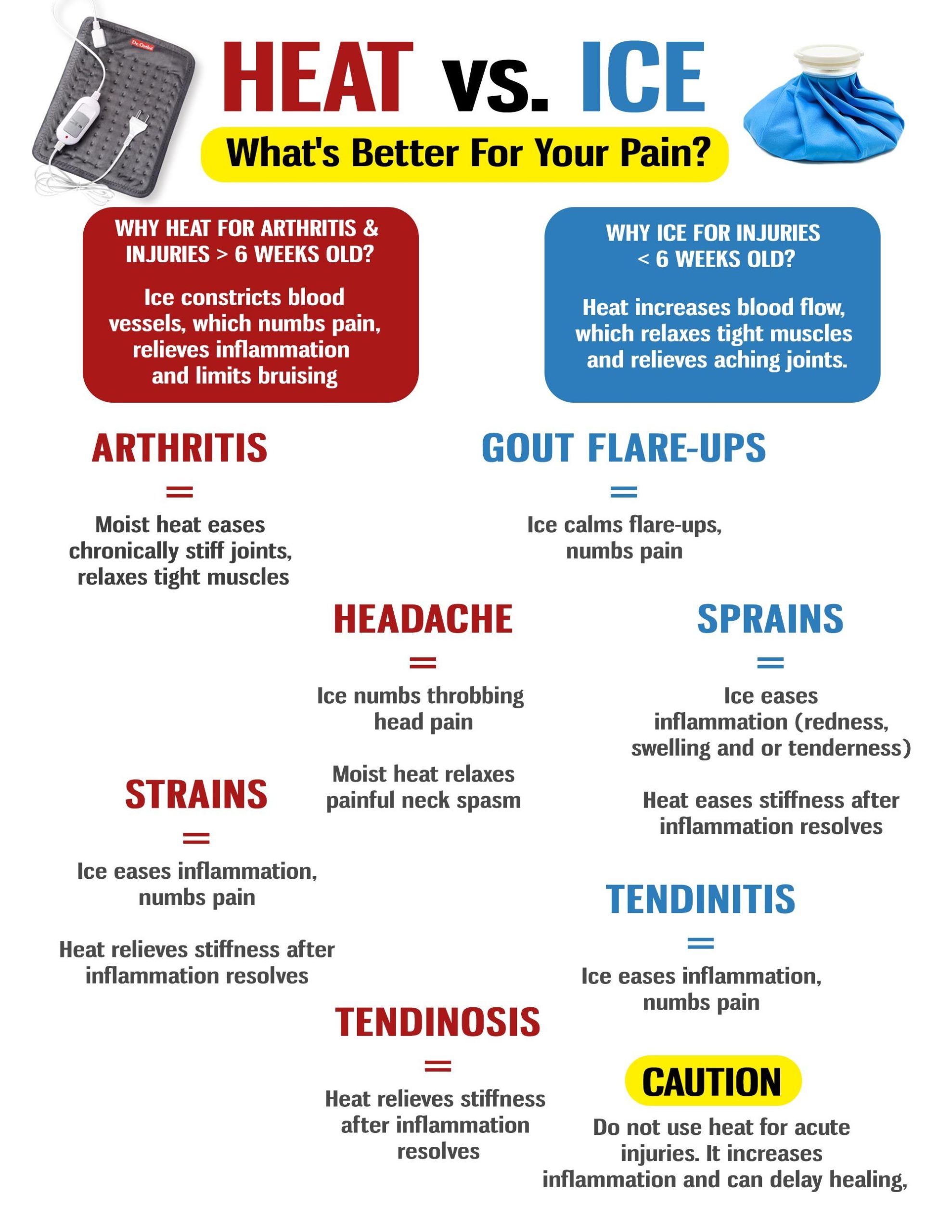When you have a fall and get an injury, I’m sure you apply a cold pack. When you have a knee pain or a back pain, you often apply heat treatment to reduce the pain. Well, is ice better for injuries or heat treatment?

Both ice and heat are natural short-term relief treatments used for years, but it is essential to remember that not all injuries require only ice or only heat treatments.
While some injuries like arthritis require heat treatment, some injuries like gout flare-ups require ice treatment.
So, in this article, we’re going to talk about which treatment is suitable for which injury – ice vs. heat, which should you choose.
Ice vs. Heat: What is Better for Your Injury?
Ice Treatment
Ice treatment is to be used on acute injuries like back pain, sprains, sciatica etc. It can help reduce swelling and inflammation, as ice can help constrict blood vessels. Ice treatment should be used if your injury is recent, within the last 24 to 48 hours.
Caution: Always make sure not to apply the ice directly to the skin, to avoid ice burns and also, treat with ice only for 10 to 15 minutes, remove for a while and repeat.
Heat Treatment
Heat treatment is to be used on chronic conditions like tight muscles, recurring injuries etc. It can help increase the blood flow in the injured area and can provide oxygen and nutrients that are required to promote quicker healing.
Caution: Always use moderate heat and apply the heat for a short period of time and in intervals, as it can cause heat burns. Make sure not to use heat treatments (like hot water bags, heating pads etc)., while you’re asleep, so as to avoid unnecessary heat burns.
Ice vs. Heat: Which Common Injury Requires Which Treatment?
1. Arthritis
Treatment: Heat
When you have a worn-away cartilage in your joints, be it your knee, shoulder, elbow, finger etc., the use of moist heat can ease chronically stiff joints and can also relax tightened muscles.
2. Sprains
Treatment: Ice/Cold/Heat
For sprains, when a muscle is pulled or a tendon is injured (in the thigh, calf, back etc)., ice can help ease the inflammation (including tenderness, swelling, redness etc)., and can numb the pain, while heat treatment can help ease the stiffness after the inflammation has decreased.
3. Gout Flare-Ups
Treatment: Ice/Cold
For gout flare-ups and in such cases, inflammation, ice treatment can help calm those flare-ups and can also help numb the pain.
4. Headaches
Treatment: Cold/Heat
When you have a headache, you have pain from your nerves or your blood vessels in the head or from the muscles in the back of your neck. While using ice can numb the throbbing pain in the head, moist and mild heat can help relax the painful spasm in the back of the neck.
5. Tendinosis
Treatment: Heat/Cold
When you have chronic irritation and stiffness in the tendons which are attached to the joints, ice can help ease inflammation and can numb the pain and heat treatment can relieve stiffness once the inflammation has reduced.
6. Strains
Treatment: Heat/Ice/Cold
For strains, while stretching or tearing of ligaments in joints like the knee, elbow, foot or ankle, ice can help ease inflammation and can numb the pain, while heat can help relieve stiffness after the inflammation has been resolved.
7. Tendinitis
Treatment: Ice/Cold
When you have acute irritation after an activity in the tendons, which are attached to your joints, like the heel, wrist, knee, elbow, shoulder etc., ice/cold treatment can help ease inflammation and can numb the pain.
